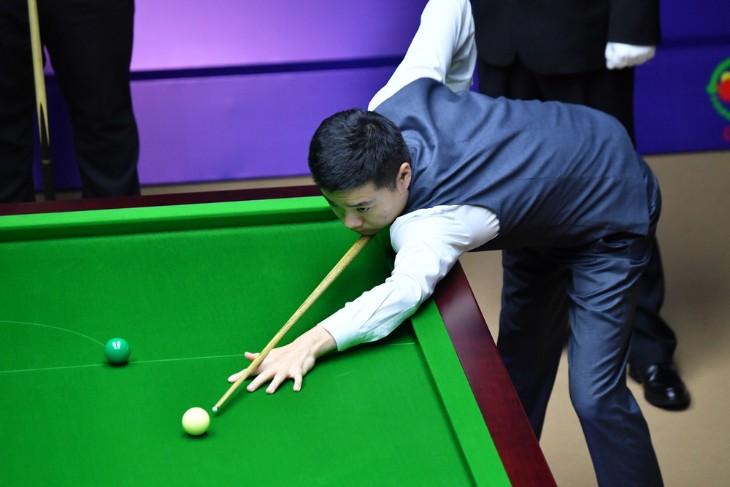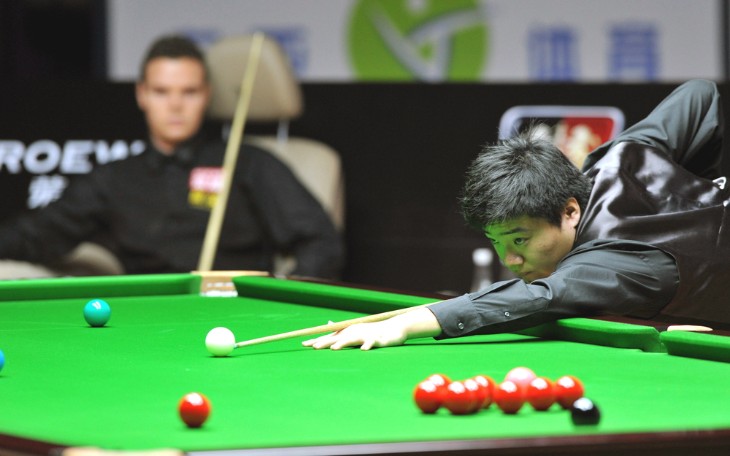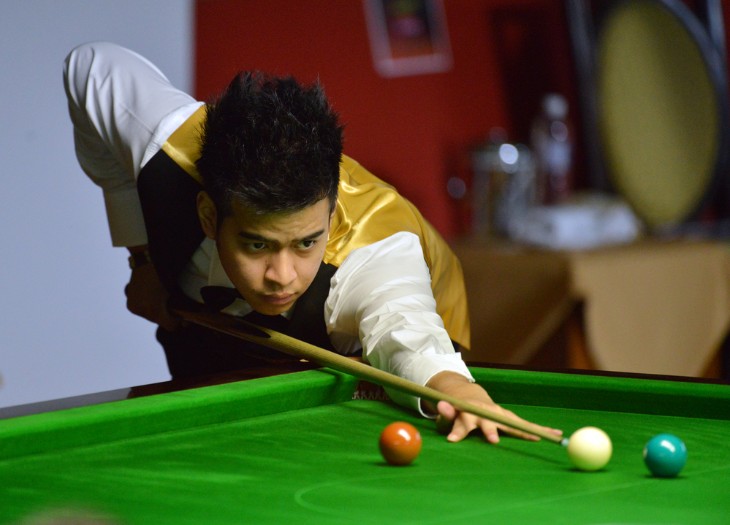When a player strikes the cue ball, they can impart different types of spin – top spin, back spin, or side spin – influencing the ball's trajectory after it hits another ball or cushion. The spin affects the angle at which the ball deflects, a concept known as the 'angle of reflection'. Mastery of these concepts allows players to control the cue ball's path, setting up for subsequent shots.
Momentum, the product of the ball's mass and velocity, is another key aspect. When the cue ball strikes another ball, momentum is transferred, determining how the target ball reacts. The control of momentum, combined with precise calculation of angles, is what separates skilled players from novices.
A common, yet unpredictable, occurrence in snooker is what is known as a 'kick'. In simple terms, a kick in snooker happens when the cue ball or the target ball jumps slightly upon impact, resulting in an unexpected change in the trajectory or speed of the ball. This phenomenon can disrupt the intended path of the ball, often leading to missed shots or unintended outcomes. Understanding what is a kick in snooker is critical for players at all levels.
The cause of kicks in snooker is often attributed to small particles of dust or chalk on the ball's surface, or even static electricity. These minute elements can create a tiny barrier between the balls, causing them to react unpredictably when they collide. Kicks can be frustrating for players as they can occur randomly and can significantly alter the course of a game. Identifying and mitigating kicks is a part of the game's challenge and requires players to be adaptable and resilient in their strategies.
Causes of a Kick in Snooker: Exploring the Factors
The causes of a kick in snooker are varied and often debated among players and enthusiasts. One prevalent theory is that kicks are primarily caused by dirt or chalk dust on the balls. During play, the balls inevitably pick up particles from the table's surface and from the chalk used on the cue tip. These particles can create a small but significant barrier between the ball surfaces, leading to a kick. The impact of these particles is subtle, yet they can drastically alter the trajectory and spin of the balls.
Another factor believed to contribute to kicks is static electricity. The friction between the ball and the baize can generate static charges, particularly in environments with dry air. This static charge can cause a slight jump or deviation when balls collide, resulting in what is known as a kick in snooker. The exact mechanics of how static electricity influences ball behaviour are complex, but it's an area of ongoing investigation among those seeking to understand and reduce the occurrence of kicks in the game.

Effects of a Kick on Snooker Gameplay
The impact of a kick on snooker gameplay can be significant, often altering the outcome of a shot or even an entire frame. A kick can cause the cue ball to veer off its intended path, miss the target ball, or fail to impart the desired spin. This unpredictability can be particularly frustrating for players, as it introduces an element of chance into a game that is otherwise highly skill-based.
The psychological impact of experiencing a kick can also be noteworthy. Players may become cautious or alter their playing style, trying to compensate for the possibility of another kick occurring. This can lead to overthinking and a departure from their natural game, affecting performance. Understanding and adapting to the potential for kicks is part of the challenge in snooker, requiring players to be mentally resilient and adaptable. While the occurrence of a kick in snooker can be frustrating, it also adds an element of unpredictability that can make the game more intriguing for players and spectators alike.
Preventing Kicks: Tips and Techniques
Minimizing the occurrence of kicks in snooker is a matter of meticulous maintenance and careful play. One of the key strategies is regular cleaning and maintenance of the balls and table. Ensuring that the balls are free from chalk dust, oils, and other debris can significantly reduce the likelihood of a kick. Many professional venues use special ball cleaning machines to maintain a pristine condition, which is crucial for high-level play.
Players can also adopt certain techniques to lessen the chances of a kick. Some suggest using lighter shots, especially in delicate situations where a kick could be more disruptive. There is also a practice of striking the cue ball slightly off-centre to counteract the potential spin or jump caused by a kick. While these methods do not guarantee the elimination of kicks, they can help in reducing their frequency and impact. Understanding and implementing these preventive measures are part of a player's skill set, as they learn to navigate the intricacies of what is a kick in snooker.
Throughout the history of professional snooker, there have been numerous instances where a kick has dramatically influenced the outcome of important matches. These moments are often remembered for their unpredictability and the significant impact they had on the game's result. For instance, in major tournaments, a single kick has sometimes been the difference between winning and losing a crucial frame, thereby altering the course of a match.
These incidents have also sparked discussions among players, referees, and fans about the nature of the sport and the role of chance in what is otherwise a highly skill-based game. Some of the most famous kicks have led to calls for technological advancements or rule changes to mitigate their impact.
Player Perspectives: Reactions to Kicks
Players' reactions to kicks in snooker vary widely, ranging from frustration to acceptance as part of the game's inherent unpredictability. For professional players, especially, a kick can be particularly disheartening as it introduces an element of chance into a carefully strategized game. Many professionals have expressed their concerns about kicks, noting how a single unexpected deviation can impact high-stakes matches. This has led to discussions about the nature of snooker as a sport where skill is paramount but still subject to unpredictable factors.
On the other hand, some players view kicks as a challenge to be overcome, an integral part of the game's complexity. They argue that dealing with such unforeseen occurrences requires mental strength and adaptability, qualities essential for any top snooker player. This perspective sees kicks not just as disruptions, but as opportunities to demonstrate resilience and strategic flexibility.

Rulebook Insights: How Kicks Are Treated Officially
The official rulebook of snooker acknowledges the occurrence of kicks, but it does not provide any specific rulings to address them. This is primarily because kicks are seen as natural, albeit unfortunate, parts of the game. They are treated much like any other unexpected event, such as a bad bounce off a cushion. As such, kicks do not warrant a foul or a re-rack, and players are expected to play on from the resulting position of the balls.
This approach underlines the sport's acceptance of a certain degree of unpredictability and the emphasis on player skill in dealing with all game scenarios. While there have been discussions about potential rule changes or the introduction of technology to mitigate the impact of kicks, the essence of snooker has remained consistent. Players, therefore, must incorporate strategies to handle what is a kick in snooker, acknowledging it as a part of the game's unique character and challenge.
Advancements in Technology to Mitigate Kicks
In response to the challenges posed by kicks in snooker, there have been significant technological advancements aimed at mitigating their impact. One of the key developments has been the creation of more sophisticated ball cleaning machines. These devices are designed to remove even the smallest particles of chalk and dust, thereby reducing the likelihood of a kick occurring. Additionally, there has been research into new types of ball coatings that are less prone to accumulating static electricity and other contaminants.
Another area of technological progress is in the design and maintenance of snooker tables. Innovations in table cloth materials and maintenance equipment aim to reduce the accumulation of dust and the development of static charges. These advancements are crucial in addressing what is a kick in snooker, as they help to maintain the integrity of the game by reducing the random elements that can affect play. The adoption of these technologies in professional and amateur venues reflects the ongoing efforts to preserve the skill-based nature of snooker.
Conclusion
In conclusion, understanding what is a kick in snooker is essential for players at all levels. While often viewed as frustrating, kicks are an inherent part of the game that add an element of unpredictability. They challenge players to adapt their strategies and demonstrate resilience in the face of unforeseen circumstances. The various causes of kicks, from environmental factors to equipment conditions, require players to be vigilant and adaptable. The snooker community's response to kicks, from technological advancements to player strategies, highlights the sport's dynamic nature.
For more information:











